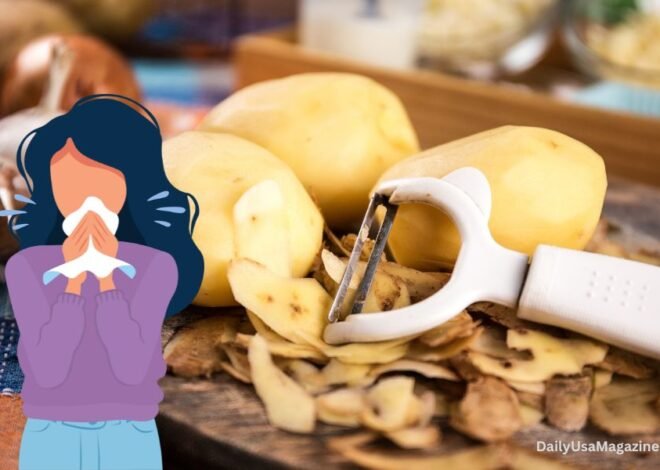Would you like to take your gardening skills to another level by learning how to grow plum trees from seeds? Then this is the right time for you. In this easy to follow guide, you will learn one of the most important processes of plum seed cultivation – cold fixation plum seeds – which is very helpful in transforming your plum seeds into seedlings. Cold fixation is an important procedure designed to enable plum seeds to go through winter and come out ready to thrive. This article will prepare you to plant strong plum seedlings in your backyard by the time you finish reading it.
Understanding Cold Fixation
Cold fixation is a particularly interesting process that is integral to the germination of seeds. But what is it actually, given its significance? Cold fixation can be defined in a more basic way as the application of cold temperatures to seeds as a form of simulating winter. This method assists seeds in overcoming dormancy which is a natural state that prevents them from sprouting when they are not in the ideal conditions. For plum seeds, cold fixation is especially useful as it helps in the leaching of the chemicals which inhibit germination and this helps in ensuring that your seeds will sprout when they should.
It is common knowledge that plum seeds are one of the most dormant seeds and this dire need for dormancy is due the fact that a plum seed would sprout on a warm autumn day, only to be killed off by the winter frost. Cold fixation seeks to alleviate some or all of this dormancy by slowly wearing the filament of the thick seed coat and readying the plum seeds for growth. Without this step, your plum seeds may be dormant or take a long time to germinate, and this will greatly reduce your chances of having healthy seedlings.
Materials and Preparation
Collect essential materials prior to beginning your cold fixation plum seed journey, you will need fresh plum seeds, moist heat media like damp sand or peat moss, air tight containers and a refrigerator. These materials will create an artificial winter environment that will help cold fixation.
First, prepare the plum seeds which you shall be using for the cold fixation process. Remove them from ripe plums, taking care that pulp and fragments of fruit are not left. After washing, seeds should be allowed to air dry so that they do not become moldy. When performing cold fixation, there is a need to select the most viable seeds as only such seeds will germinate successfully.
Step-by-Step Cold Fixation Process
The next stage of your preparation is the cold fixation. Take some ripe fruits and process the seeds carefully. First, utilize a gentle process to separate and discard the outer pulp and then wash the seeds with water to remove the rest of the pulp. Once the seeds are cleaned, allow them to dry completely.
Proceed to create a donjon where the cold fixation will be conducted. Vegetate the plum seeds in a moist medium such as damp sand or peat moss inside a sealed container. Make sure the medium never dries up, because such leaves the seeds vulnerable to desiccation. Keep the container in a refrigerator, within the temperature range of 33-41° F, to mimic winter conditions.
Usually the temperatures for cold fixation range anywhere between 6 to 12 weeks. During this time, the humidity level in the medium and the seeds should be checked for amateurist colonies. All that is needed for success in germination is a specific and constant environment.
Post-Fixation Care
Before you begin germinating your plum seeds, it is essential to prepare them after getting out of the cold fixation process. Set the seeds out of cold storage incrementally until they reach room temperature. This stage is also very important as it assists in awakening the seeds which are otherwise dormant and initiating the process of seed germination.
After the seeds have settled, plant them in rich soil where nutrients are present. Select a place with enough light and water to encourage growth. This step is also important as the young seedlings require tender hands which include close monitoring and provision of strength for the growing seedlings.
Common Issues and Troubleshooting
Despite working with precision, one may still face some difficulties while performing cold fixation and during the germination phase. One such common problem is the formation of mold, which arises due to the uncontrolled moisture of the medium. To avoid this, always use a medium that is moist but not soggy and keep looking for mold formation.
If your seeds do not seem to germinate, do not lose hope. It could be a number of things, such as excessive time spent over freezing or not enough. Analyze your method, correct the utopias which have one of these, and do it again. It is important to remember that with practice, there will be sight expectations, and so there is no need to panic.
Conclusion
In this section, you should understand the cold fixation process, as well as its advantages for the germination of plum seeds. It improves the prospects for successful sprouting and further allows the formation of more healthy and durable seedlings. Overall, when it comes to planting seeds in the soil, they are extremely good for gardening fans as well as people who love plants because it allows doing something which is quite close to nature.
We hope you will try cold fixation and be amazed at the development of your plum seeds into full blossom trees. If everything is maintained and is taken care of, it will always be pleasurable since one will have been able to see and look after their own plum seedlings which have contributed to the beauty of their particular garden.




